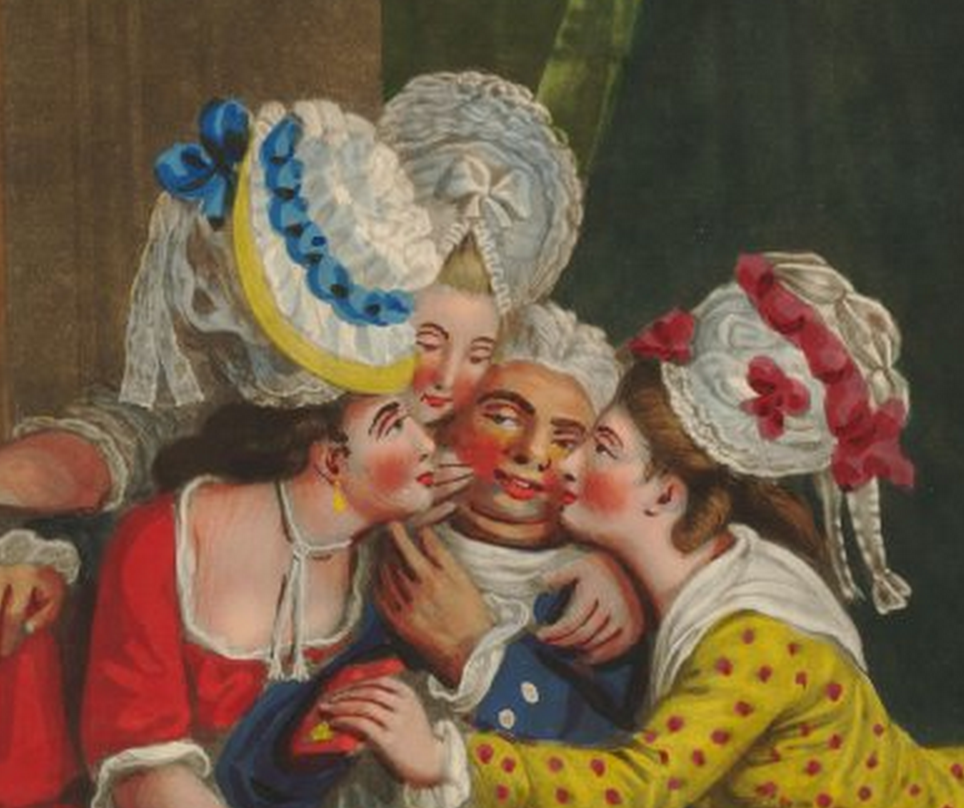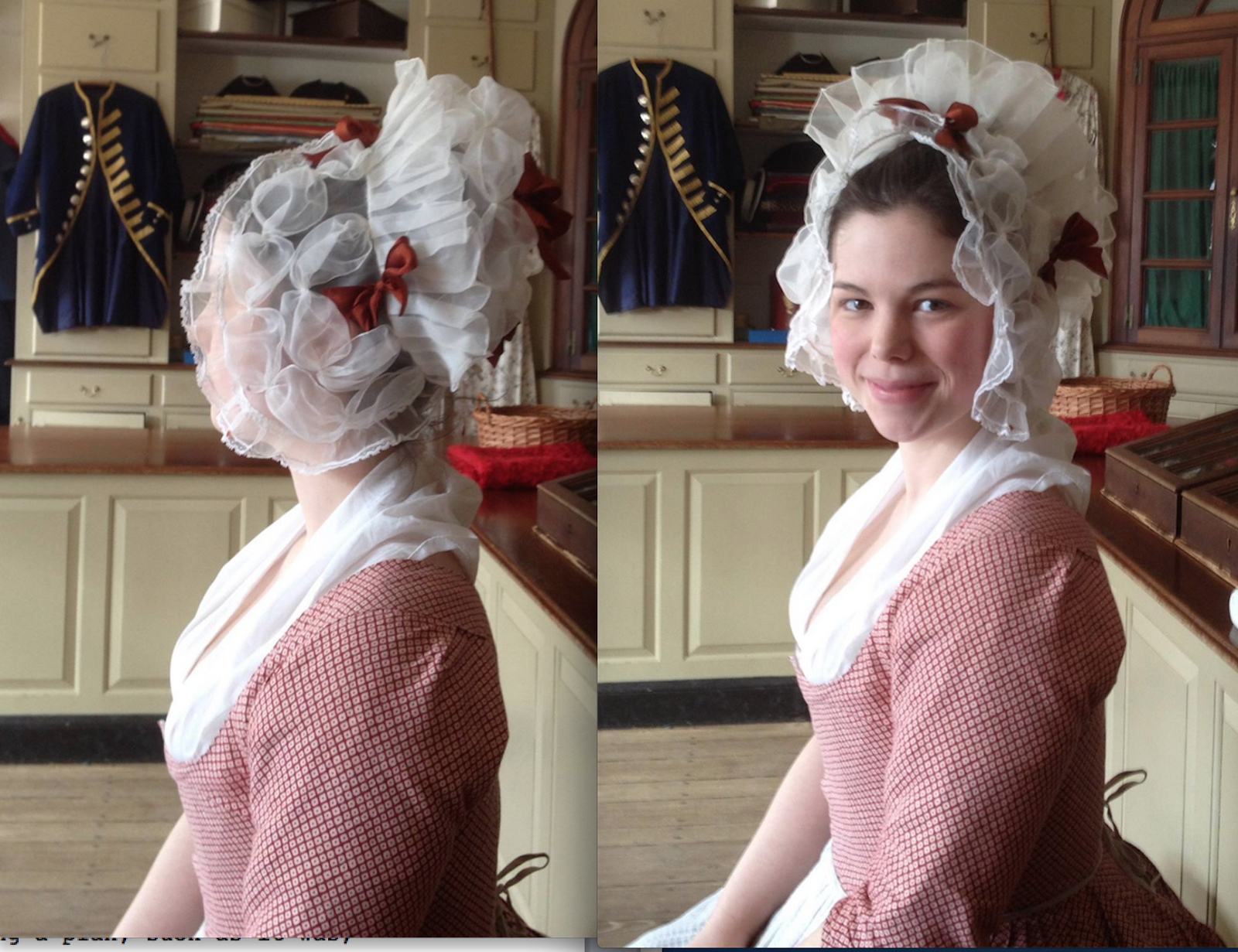Since I'm in Colonial Williamsburg this week, it seemed like a good time to revisit this popular post from 2015. Then, the mantua-makers had just finished two complicated sewing projects, and their form of relaxing was to replicate several silk gauze caps of the late 1770s-early 1780s.
Caps had been part of an Englishwoman's day-time wardrobe for many generations before this. Ostensibly to cover the head and hair for modesty's sake, they were worn by nearly all women of every age and rank. For working women, linen caps kept hair tidy and out of the way, and offered extra protection around open fires. For the more fashionable, caps could also provided a base for the wide-brimmed hats worn out-of-doors.
By the last quarter of the 18th c., however, caps had evolved into notable fashion statements on their own. Trimmed with ribbons, bows, and ruffles and enhanced with fine stitching and embroidery, caps inflated into frothy confections to match the towering hairstyles ("heads") of the time.
These stylish caps were made of the finest silk gauze, a translucent fabric with a crisp hand much like modern organza. The narrow rolled hems, pleats, and tiny stitches were a test of skill for the mantua-makers, as Nicole Rudolph, above left, demonstrates. The original caps were so airy and insubstantial that few survive in collections today. (Our CW manuta-makers report that even after a single careful laundering, the caps
But longevity wasn't the caps' point. They were a trend-driven fashion, with new variations appearing frequently in the London shops. They could be further personalized with different bows, as the back view of the example, lower left, demonstrates (though it could use some equally fashionable big hair beneath it for proper height.) Compared to a new gown, caps were also inexpensive, and an easy way to update an older wardrobe.
Looking at the satirical prints of the time, right, it's easy to assume that the size and foolishness of the caps was exaggerated (along with everything else) by the artists. They weren't. Former apprentice Abby Cox models one of the caps copied by the shop from a print, lower right, and there's no denying its exuberant charm. Yes, the cap is extreme, and more than a little foolish to modern eyes, but to an 18th c. lady - and more importantly, to an 18th c. gentleman - there were few things more unabashedly flirtatious than a pretty young woman in a sweet ruffled cap.
Above left: Photo copyright 2015 Susan Holloway Scott.
Right: Detail, Deceitful Kisses, or The Pretty Plunderers, from an original by John Collet, printed by Carrington Bowles, 1781. Collection of the British Museum.
Lower right: Photographs copyright 2015 the Margaret Hunter Shop.




 One of us --
One of us -- 



2 comments:
I agree with what you said about the cap being extreme, and more than a little foolish to modern eyes. But in every generation, fashion demanded that women wear something foolish. Think of tight corsets that broke women's ribs and limited their breathing. Or of super tall, super narrow high heels that broke women's ankles and damaged their spine.
Fluffy silk gauze caps with ruffles were relatively benign!
It would be pretty foolhardy to rely on an extremely flammable linen cap for protection against fire. Hair burns far less easily than linen. That said, a wool or silk cap would perhaps offer some protection, and a linen cap would at least keep hair cleaner.
Post a Comment